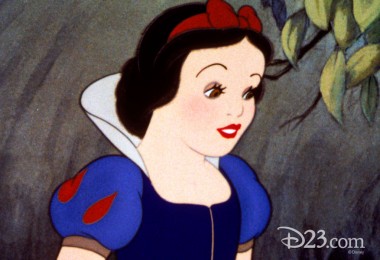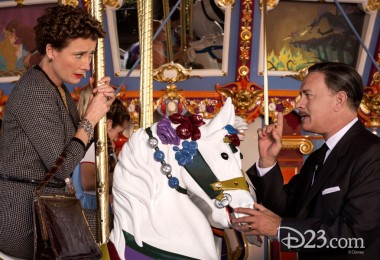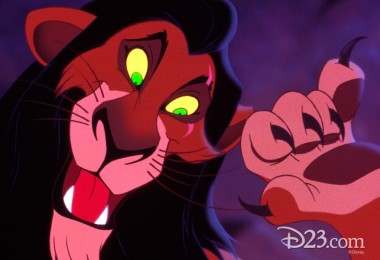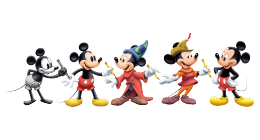Jaimie, Chilliwack, British Columbia
A: A continuity script, also known as a cutting continuity, is prepared after a film is finished. It breaks the film down scene by scene, including descriptions of the action and all dialogue, and gives the exact footage. It can then be of help to those dubbing foreign versions, quoting dialogue, preparing television and DVD versions, etc. A shooting script, on the other hand, does not represent the final film—changes are often made on set or in the editing room.
Avi, Irvine, California
A: There is no one specific choir for films, but Disney does have a cast member choir, which performs for the annual Candlelight Processionals and other events.
Bobo, Melbourne, Florida
A: There have been a number of double feature rereleases, such as Dumbo/Saludos Amigos (1949), The Shaggy Dog/The Absent-Minded Professor (1967), The Living Desert/The Vanishing Prairie (1971), Dumbo/The Legend of Lobo (1972), One Hundred and One Dalmatians/Swiss Family Robinson (1972) Old Yeller/The Incredible Journey (1974), Treasure Island/Dr. Syn Alias the Scarecrow (1975), Never a Dull Moment/The Three Caballeros (1977), and The Jungle Book/The Sign of Zorro (1978). As you will notice, many of these came in the 1970s, when the company was not making a lot of new movies. During the days that theaters regularly showed double features, Disney would often release a reissue as a companion to a new feature.
Timothy, North Easton, Massachusetts
A: We cannot think of any instance where Jiminy Cricket played a ukulele in a cartoon.
Avi, Irvine, California
A: The filmmakers utilized the Studios’ main entrance on Buena Vista Street, the door into Stage A, and various shots around the exterior of the original Animation Building on Mickey Avenue, Dopey Drive, and Minnie Avenue.
Avi, Irvine, California
A: Walt found out that when he started signing autographs at Disneyland, he got this huge crowd around him, and he was unable to get his work done. So he made a point of hand-signing pages from his notepads, and he would hand them out to guests on request. The signatures were authentic.
Jaimie, Chilliwack, British Columbia
A: Cutting continuities are prepared in a very limited edition for all films after they are completed. The continuities indicate the exact length of each scene, a description of the action, and any dialogue. They are used in many different departments at Disney, such as sound dubbing, foreign releases, selecting film clips for publicity, etc. Since they are primarily an internal document, there would be few outside the company, so you have a nice item. It would not have much monetary value, however.

Brian, Littleton, Massachusetts
A: Snow White’s eyes in the original film were brown. It is possible that in later uses—movie posters, books, merchandise, etc.—that she might sometimes have been given blue eyes.

Stephie, Las Vegas, Nevada
A: In a 1955 Disneyland press release, King Arthur Carrousel was described as featuring “gay calliope tunes.” A 1969 issue of Disney News suggested that “The Skater’s Waltz” was played on the calliope. At some point later, Disney music was added.

Dana, New York
A: That name appeared in a 1994 book series about The Lion King, and is not recognized as an official name of the character.





